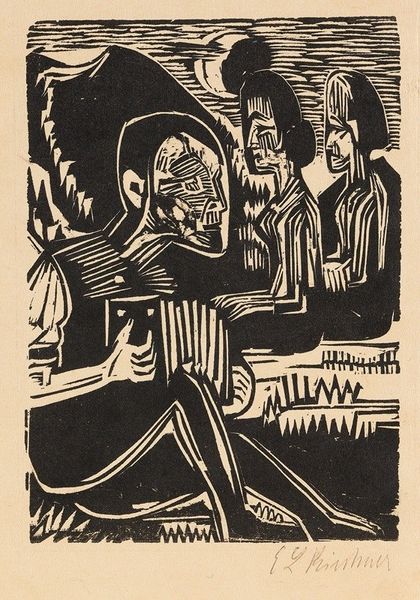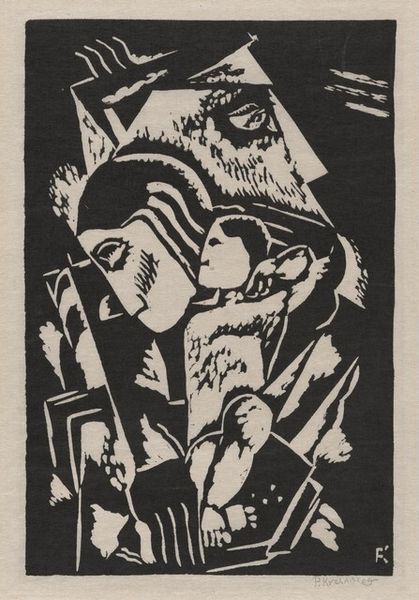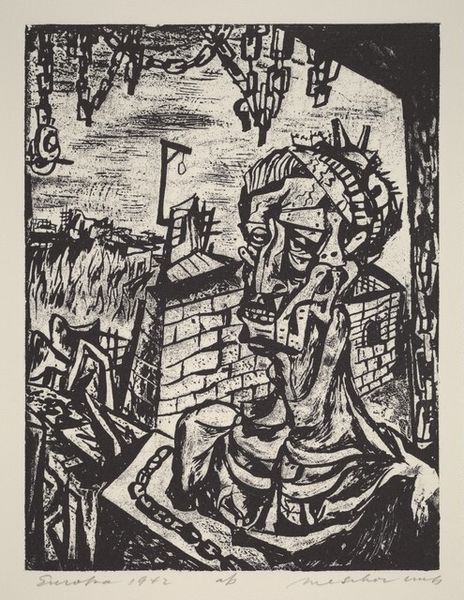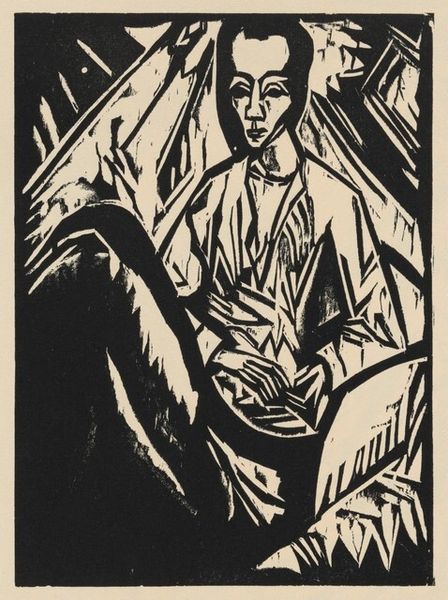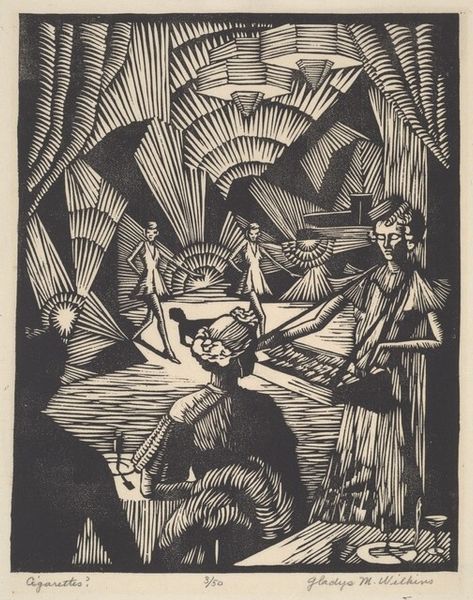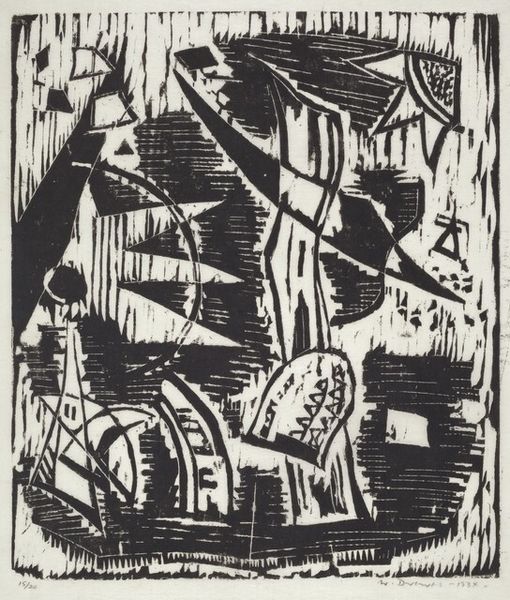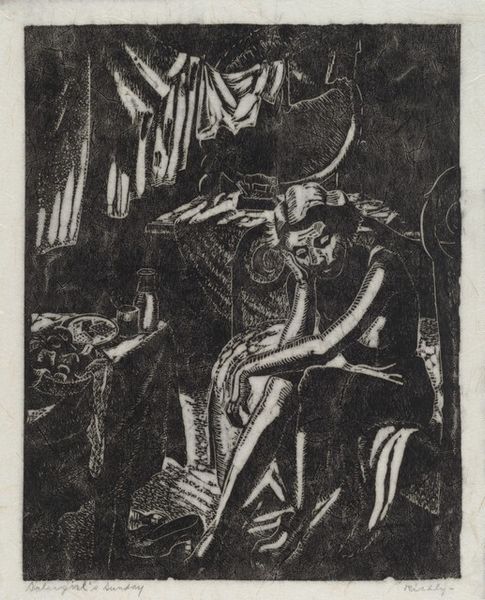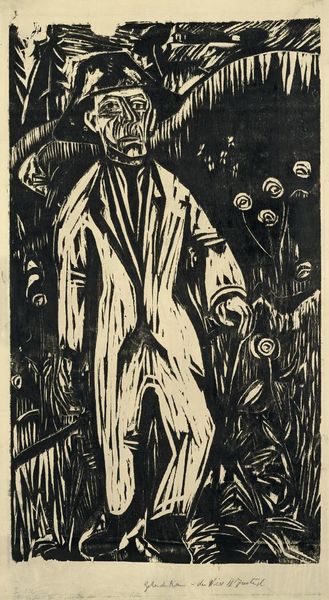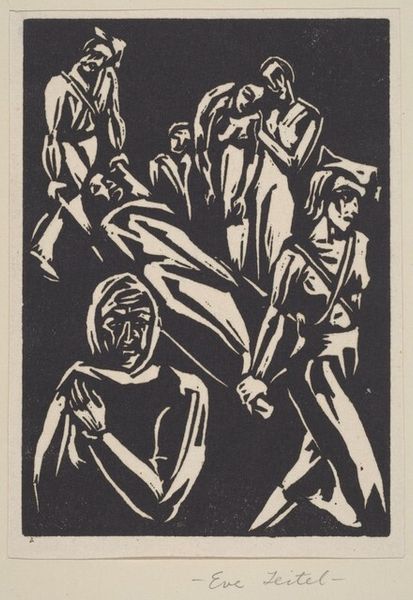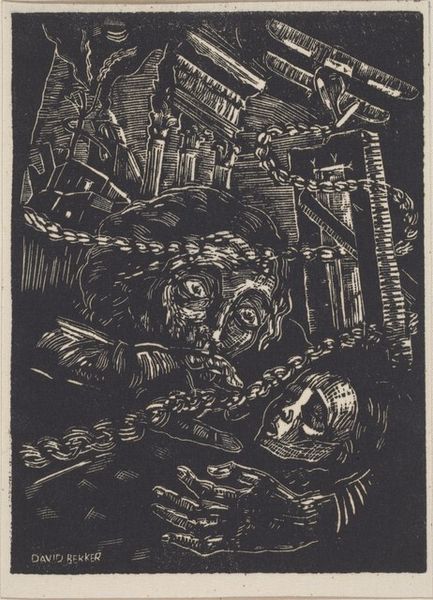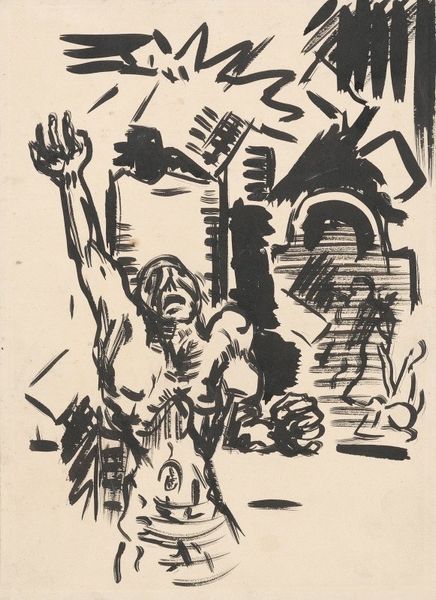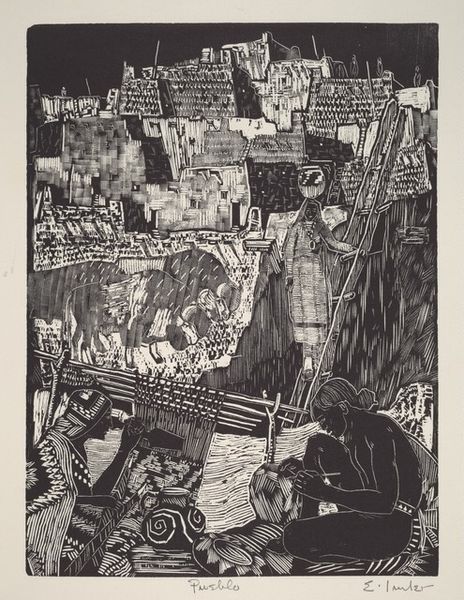
print, woodcut
#
portrait
# print
#
landscape
#
german-expressionism
#
figuration
#
expressionism
#
woodcut
Copyright: Public Domain: Artvee
Curator: Kirchner’s 1917 woodcut, "Sennkopf," immediately strikes me as a deeply internalized expression of the artist's state during his time in Switzerland. What are your initial observations? Editor: The stark black and white is incredibly affecting. It creates a dramatic tension, and the exaggerated lines of the face make it seem almost tormented. Curator: Indeed. This print was created during a pivotal moment; Kirchner had suffered a mental breakdown and was seeking refuge in the Swiss Alps. He had volunteered for military service in WW1, and was soon after discharged because of his mental state. We can appreciate this not merely as portraiture, but as a window into the artist's psychological struggles. Editor: I see the emotional turmoil reflected in the angularity and fragmentation of the forms. The deep lines etched into the face certainly communicate hardship, but also resilience. It feels very visceral. The flatness inherent in the woodcut is negated by those sharp, insistent lines; he coaxes depth through them. Curator: His embrace of woodcut—a traditional German medium— during this period in Switzerland highlights his own effort to reconnect with the cultural and artistic traditions of his homeland amidst personal turmoil and feelings of alienation during the war. He was treated at a sanatorium in Kreuzlingen. Art was to heal him and show a new path. Editor: Looking closer, I’m also noticing how the surrounding landscape and buildings almost meld with the figure's face. The lines that define the mountain ridges and the houses are not unlike the lines defining the planes of his face and beard. What does that mean to you? Curator: It blurs the boundary between self and surroundings, reflecting perhaps a symbiotic, albeit uneasy, relationship with the Alpine environment. This wasn't merely a refuge but also a mirror reflecting his inner chaos but with a perspective towards finding peace. It can be seen as nature is part of himself. The farmer is the expressionist form of the landscape itself. Editor: So, beyond a representation of physical place, you're seeing a metaphor for internal conflict being resolved or perhaps… integrated? Curator: Precisely. Kirchner's Swiss sojourn produced a body of work, not always successful, in which he explored themes of identity and belonging against the backdrop of war and personal trauma. This image speaks to the complexity of that search for wholeness through returning to nature in its pure and beautiful forms, and through a return to native forms of artistic production. Editor: The power of expressive line and bold contrast; quite compelling for something carved from wood. Curator: Indeed, and context is key. By considering his wartime experiences and mental health, we find even greater depths of meaning and human resonance.
Comments
No comments
Be the first to comment and join the conversation on the ultimate creative platform.

